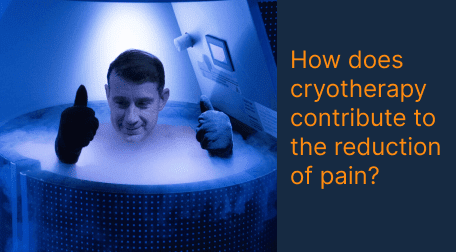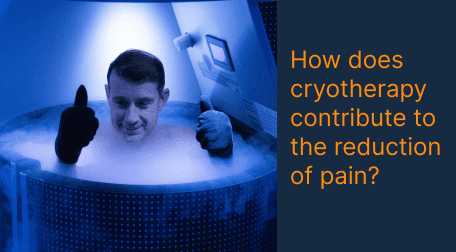Cryotherapy

In recent years, cryotherapy has gained popularity as a holistic approach to pain management. This innovative treatment involves exposing the body to frigid temperatures for a short period of time. The rationale behind cryotherapy is that the intense cold can trigger a range of physiological responses, contributing to pain reduction and overall well-being. This article will delve into the most frequently asked questions about cryotherapy and its role in alleviating pain.
What is cryotherapy?
Cryotherapy, also known as cold therapy, is a technique that involves exposing the body or specific body parts to extremely low temperatures. This can be achieved through various methods, including ice packs, ice baths, or specialized cryotherapy chambers.
How Does Cryotherapy Work in Reducing Pain?
Cryotherapy is believed to reduce pain through several mechanisms. Firstly, the cold temperature constricts blood vessels, reducing blood flow to the affected area. This can help alleviate inflammation, swelling, and pain associated with various conditions.
Does cryotherapy provide long-term pain relief?
While cryotherapy may offer immediate pain relief, its long-term effectiveness can vary depending on the underlying cause of the pain. Some individuals report sustained pain reduction, while others may require ongoing sessions to manage chronic conditions.
What Types of Pain Can Cryotherapy Help Alleviate?
Cryotherapy has been used to manage various types of pain, including muscle soreness, arthritis, and post-surgical pain. It is also popular among athletes for its potential to speed up recovery from injuries and enhance performance.
Is cryotherapy safe?
When performed by trained professionals and adhering to recommended guidelines, cryotherapy is generally considered safe. However, it is essential to consult with a healthcare professional, especially for individuals with pre-existing medical conditions.
Are there risks or side effects associated with cryotherapy?
While cryotherapy is generally safe, some individuals may experience side effects such as skin irritation, numbness, or tingling. Extreme cold exposure can also pose a risk of frostbite, emphasizing the importance of proper supervision and adherence to safety protocols.
How many sessions are needed for optimal results?
The number of cryotherapy sessions required for optimal pain reduction can vary based on individual needs and the nature of the pain. Some people may experience immediate relief, while others may require multiple sessions over an extended period.
Conclusion:
Cryotherapy’s role in pain reduction continues to be a topic of interest and research in healthcare. While many individuals report positive outcomes, it is crucial to approach cryotherapy as a complementary therapy and consult with healthcare professionals for personalized advice. The potential benefits, when combined with a comprehensive pain management plan, make cryotherapy a fascinating avenue for those seeking alternative approaches to alleviate pain and enhance overall well-being. As with any medical intervention, informed decision-making and collaboration with healthcare providers remain essential for a safe and effective experience with cryotherapy.
